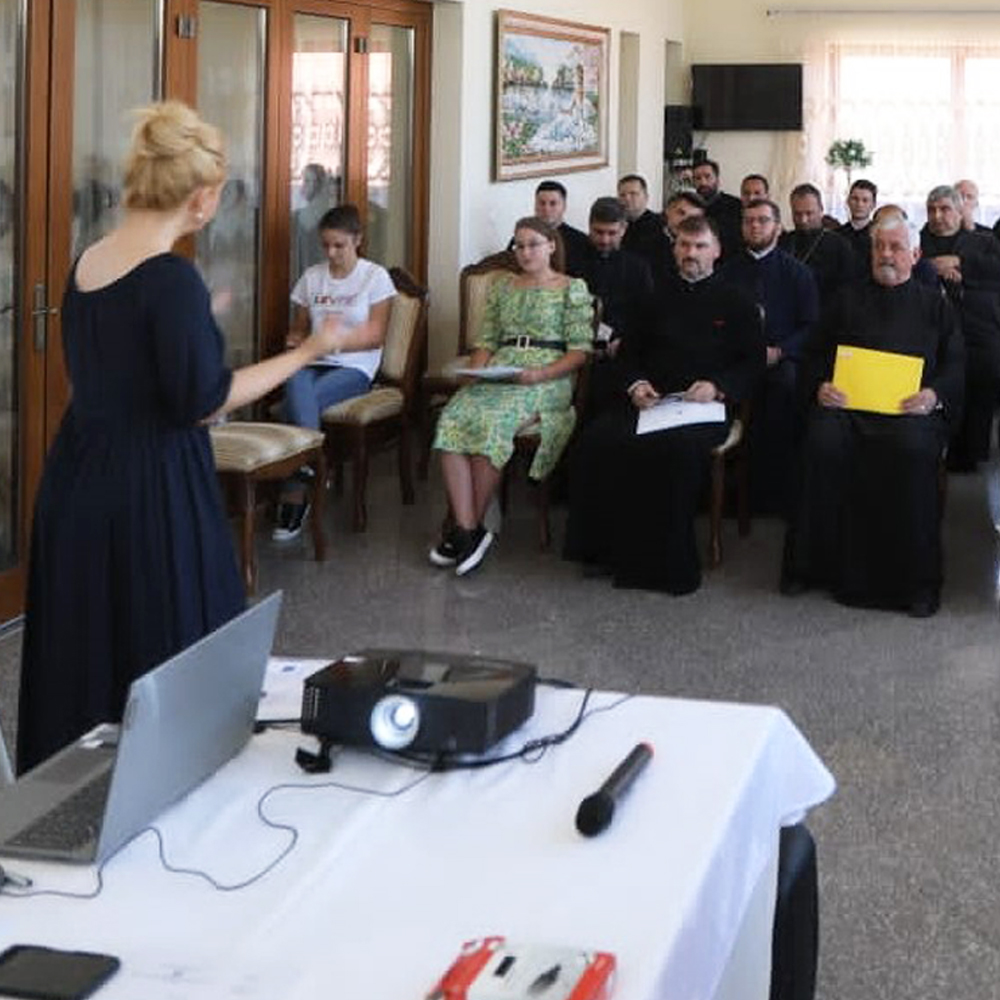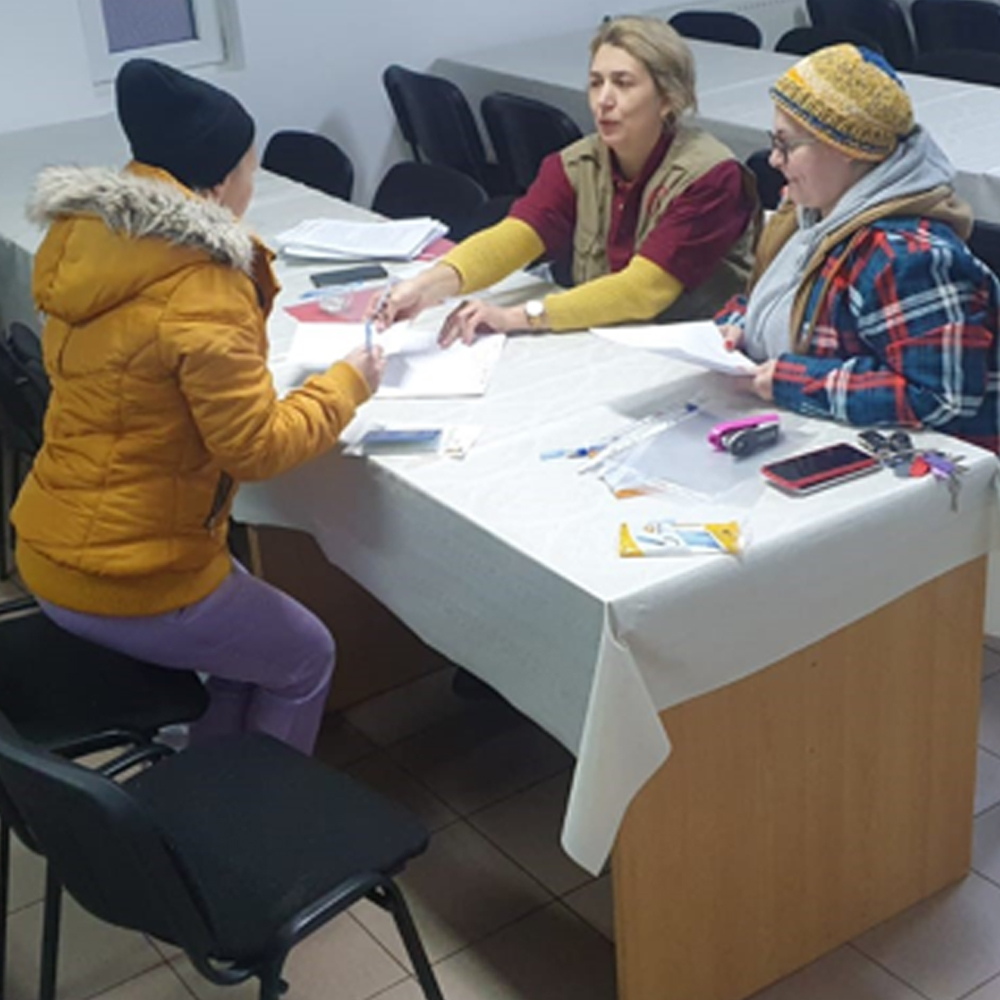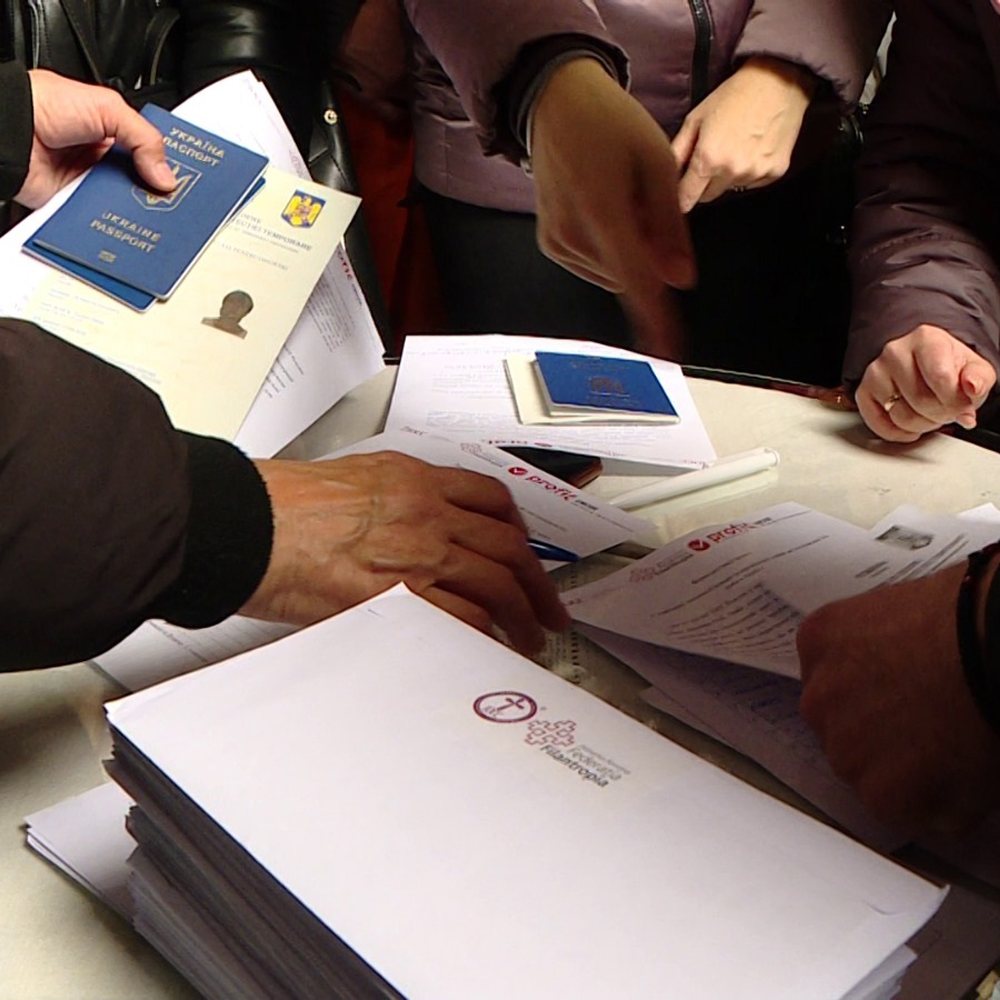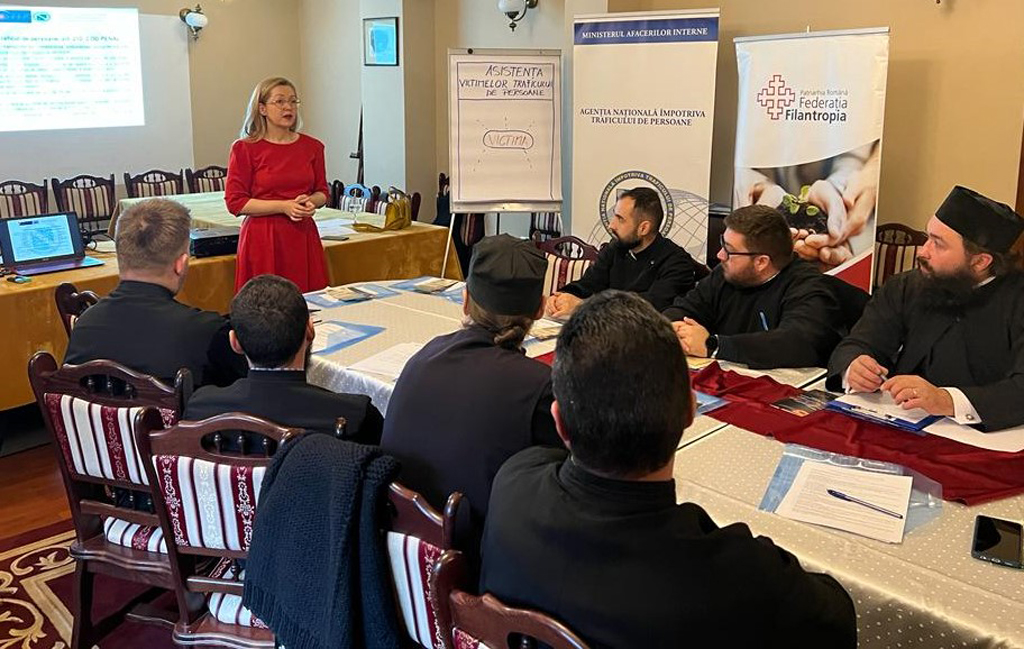
“This training made me realize that human trafficking is an issue that can affect us all, even if we think we have the proper education and a social status that won’t allow us to become a victim,” said one Romanian priest after completing IOCC’s training workshop. “I’ll pay more attention to my family and to all the people that are coming into my parish.”
Since conflict began in Ukraine in 2022, millions—especially women and children—have fled, seeking safety. Romania, where IOCC has worked since 2000, has been one nearby destination for Ukrainian refugees.
Whenever there are massive movements of people, the risk of human trafficking skyrockets. People in vulnerable positions—for instance, mothers with small children, people with disabilities, the ill, the elderly, and others—can easily become targets in any refugee crisis.
Early in its Ukraine response, in addition to meeting emergency needs like food and shelter, IOCC incorporated antitrafficking efforts into its humanitarian program in Romania. Working closely with long-time Church partner Federation Filantropia and Romania’s National Agency Against Human Traffic, IOCC is supporting this vital work behind the scenes with targeted workshops across several regions.
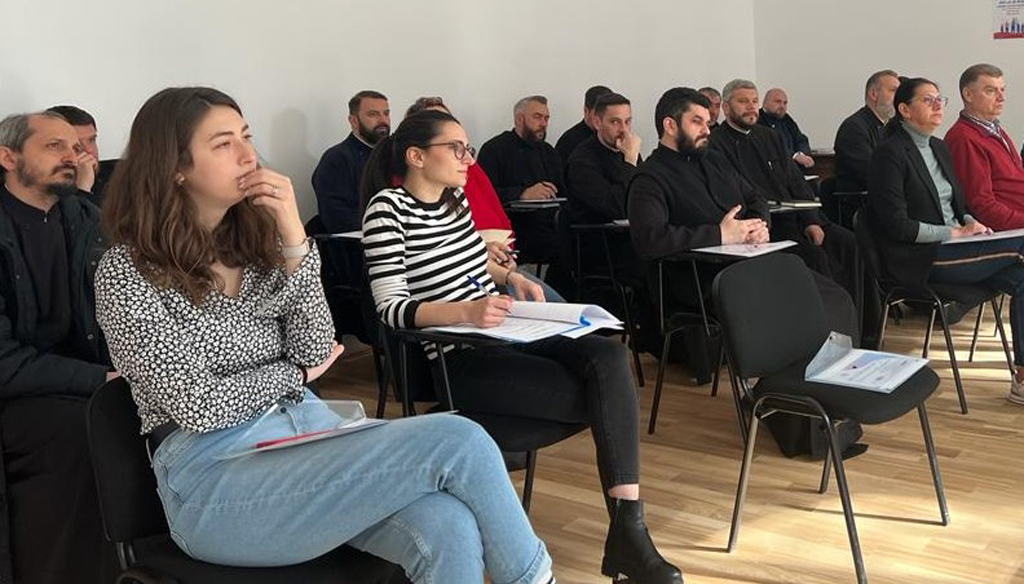
With a focus on equipping those working most closely with refugees, these programs continue teaching hundreds of clergy, social workers, and volunteers to recognize the signs of human trafficking and take appropriate action. Trainees, who often meet and help refugees because of their work, are better equipped to guide them out of risky situations, connect them with additional resources, and help them build a safer future.
“Because of this training, now I can identify a person who’s at risk, and I can take action,” another trainee shared. “I know the institutions that need to be approached, and I know that I’m the first layer of intervention.”
Sometimes the most important work is hard to see. But it’s no less vital than more visible aid.


